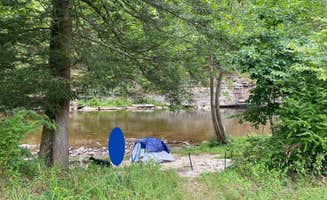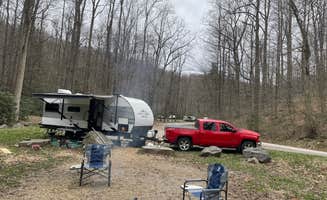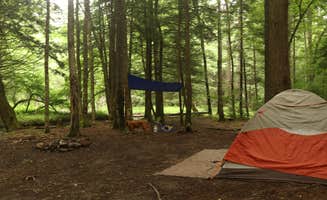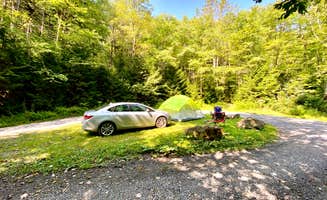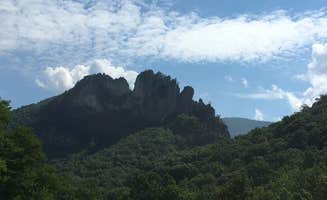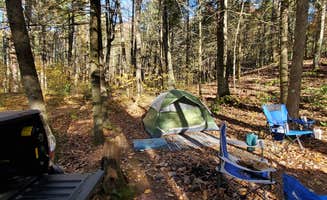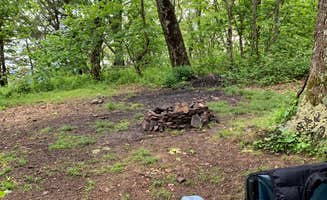Dispersed camping near Red Creek, West Virginia offers primitive sites on forest service roads at elevations between 2,500-4,000 feet. Many areas become inaccessible during winter months when roads close due to snow accumulation and freezing conditions. The region's continental climate creates significant temperature drops after sunset, even in summer when daytime temperatures can exceed 80°F.
What to do
Hiking to swimming holes: During summer months, many campers at Gandy Creek Dispersed Camping explore the deeper sections of the creek for swimming. "Several spots along the creek are deep enough for swimming," notes Sandra B., who recommends arriving early to secure the most desirable waterfront sites.
Stargazing at high elevations: The minimal light pollution at Dolly Sods Backcountry creates exceptional night sky viewing opportunities. "The moon was bright but you could still see hundreds of stars," reports one visitor who camped at a higher elevation site. The area's open meadows provide unobstructed views of constellations.
Trout fishing: Fishing for native brook trout is popular in the mountain streams throughout the region. A camper at Lower Glady Dispersed Campground mentioned, "Nice and quiet. Great fishing and hiking!" Fishing licenses are required and can be purchased online through the West Virginia Division of Natural Resources.
What campers like
Diverse ecosystems: The Red Creek area features multiple distinct environments within short distances. "With the incredibly varied landscapes and diverse vegetation, Dolly Sods truly feels like you are somewhere far north from WV. The ferns and evergreens reminded me of being in Maine, the vast meadows felt like I was in Wyoming or Montana," writes Ben about Dolly Sods.
Privacy between sites: Many dispersed camping areas feature well-spaced sites that provide solitude. At Little River Dispersed Campsites, a camper noted, "Little river has about 15 campsites along Little River Road. Most are decent, but a few are absolutely gorgeous." The spacing between sites prevents noise from carrying between camping areas.
Natural swimming areas: Creek and riverside sites often feature swimming holes. "When you park and walk down to the river, if you turn right, there's a beach area about 50 yards down that offers a great spot to take a dip!" reports Tommy S. about Little River Dispersed Campsites. These natural swimming spots provide welcome relief during hot summer days.
What you should know
Road conditions vary seasonally: Many access roads to dispersed camping areas become challenging after rainfall. At Canaan Loop Road Dispersed, a visitor noted, "We camped here on a winter road trip fully prepared for the worst weather and this mountain top dispersed site delivered. It was muddy and snowy but our Subaru made it fine about half way into Canaan loop road."
Wildlife encounters require preparation: Black bears are active throughout the region. One camper at Little River reported, "Not even 2 minutes from our dispersed camp site we were charged by an extremely aggressive black bear." Food storage in vehicles or bear canisters is essential, not optional.
Cell service limitations: Coverage is virtually non-existent across most camping areas. "Nearest cell tower is here 38.688719,-79.979097," notes a camper at Mower Basin, providing specific GPS coordinates for the closest reception point. Download offline maps before arriving.
Tips for camping with families
Creek exploration spots: Several camping areas feature child-friendly shallow water play areas. "We found a nice site in the pine trees! Perfect for 2 vehicles and 5 people hammock camping!" notes Michael H. about Canaan Loop Road, describing a campsite configuration that works well for family groups.
Best seasons for family camping: Late spring through early fall provides the most comfortable temperatures for families with children. "There are lots of trails, LOTS, all around that area," reports Jennifer R. about Gandy Creek, indicating abundant day hiking options for families of various ability levels.
Easy access sites: For families with small children, sites closer to main roads reduce hiking distances with gear. "There are a couple fire rings up by the parking spot, but we chose to set up a little closer to the creek," shares Tommy S., describing the flexibility of site selection at Little River.
Tips from RVers
Road clearance requirements: High clearance vehicles are necessary for many dispersed camping areas. At Mower Basin, a visitor reported, "The roads are gravel and maintained enough for just about any vehicle to get back there," but cautions that final approaches to some sites require careful navigation.
Limited turnaround space: Most forest service roads have few areas to turn larger vehicles. "If you come in from the east, it's a very well maintained road for any vehicle (RVs may have trouble turning around)," notes Clayton S. about Canaan Loop Road, warning of specific challenges for larger rigs.
Weight restrictions after rain: Many unpaved access roads become hazardous for heavy vehicles after precipitation. "The road was the worst and really not worth the drive in," cautions a reviewer about conditions that can trap RVs in mud during wet weather.


